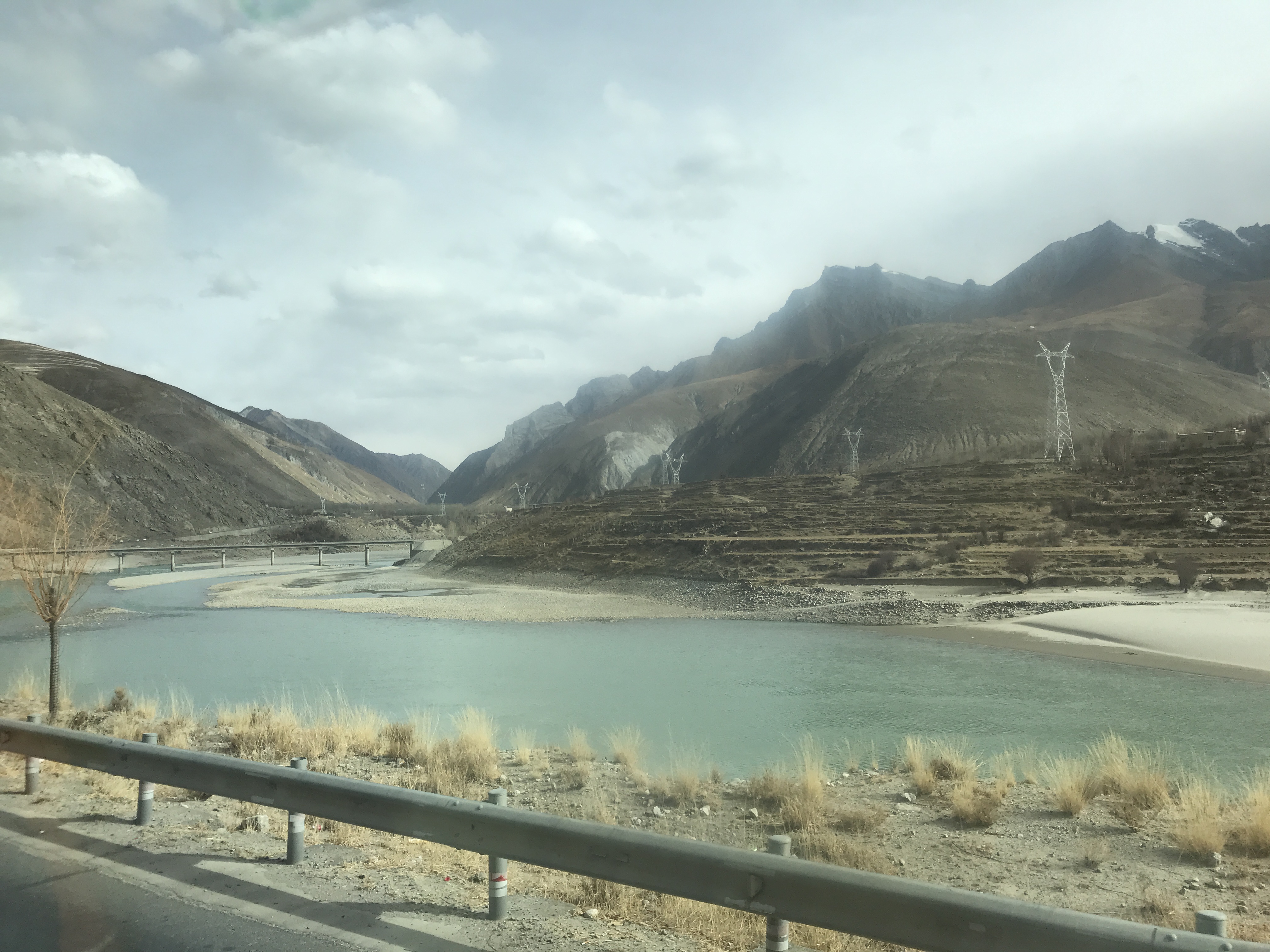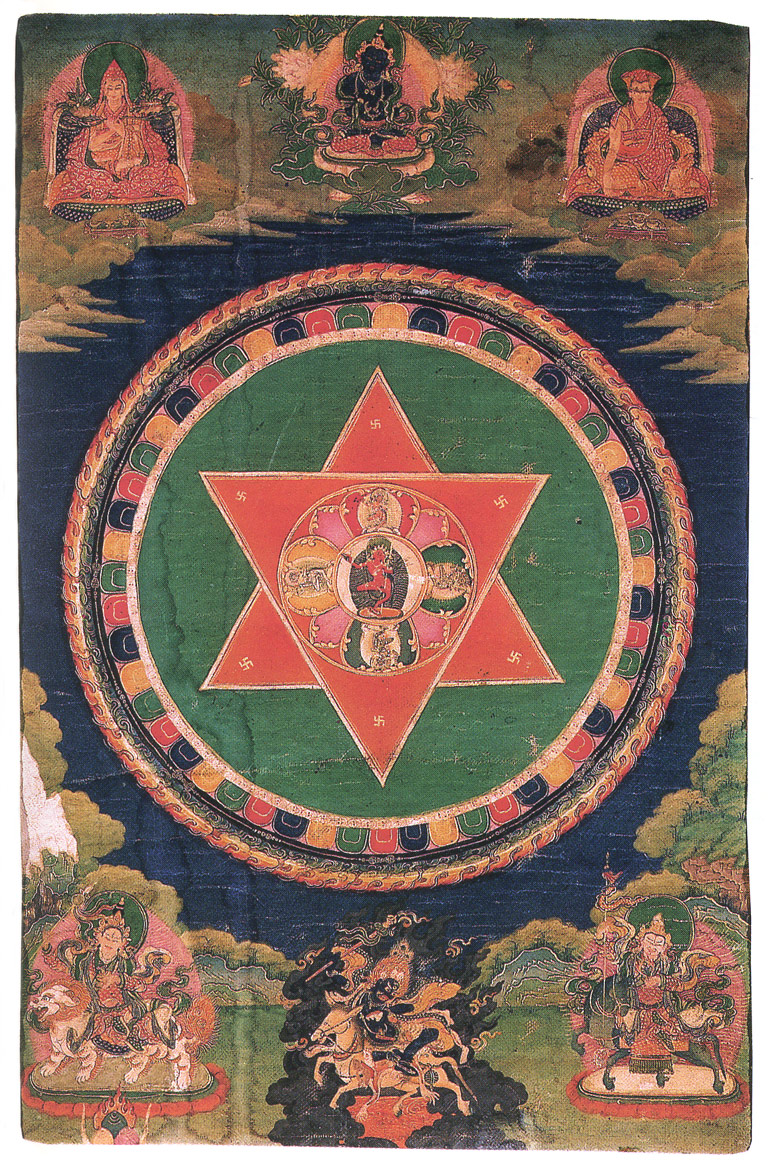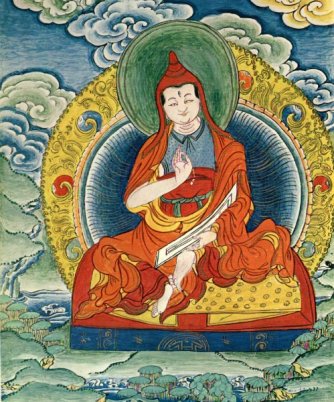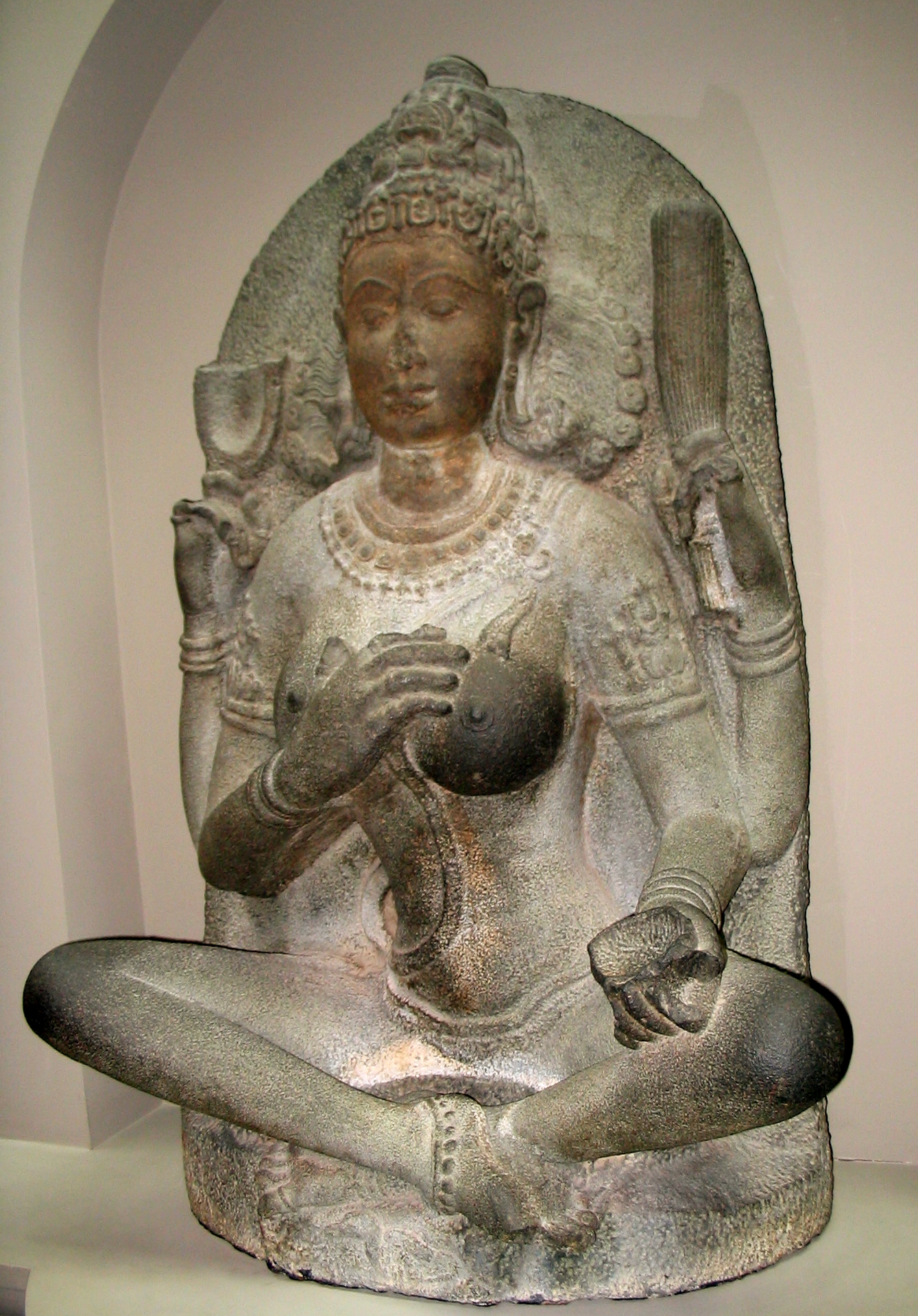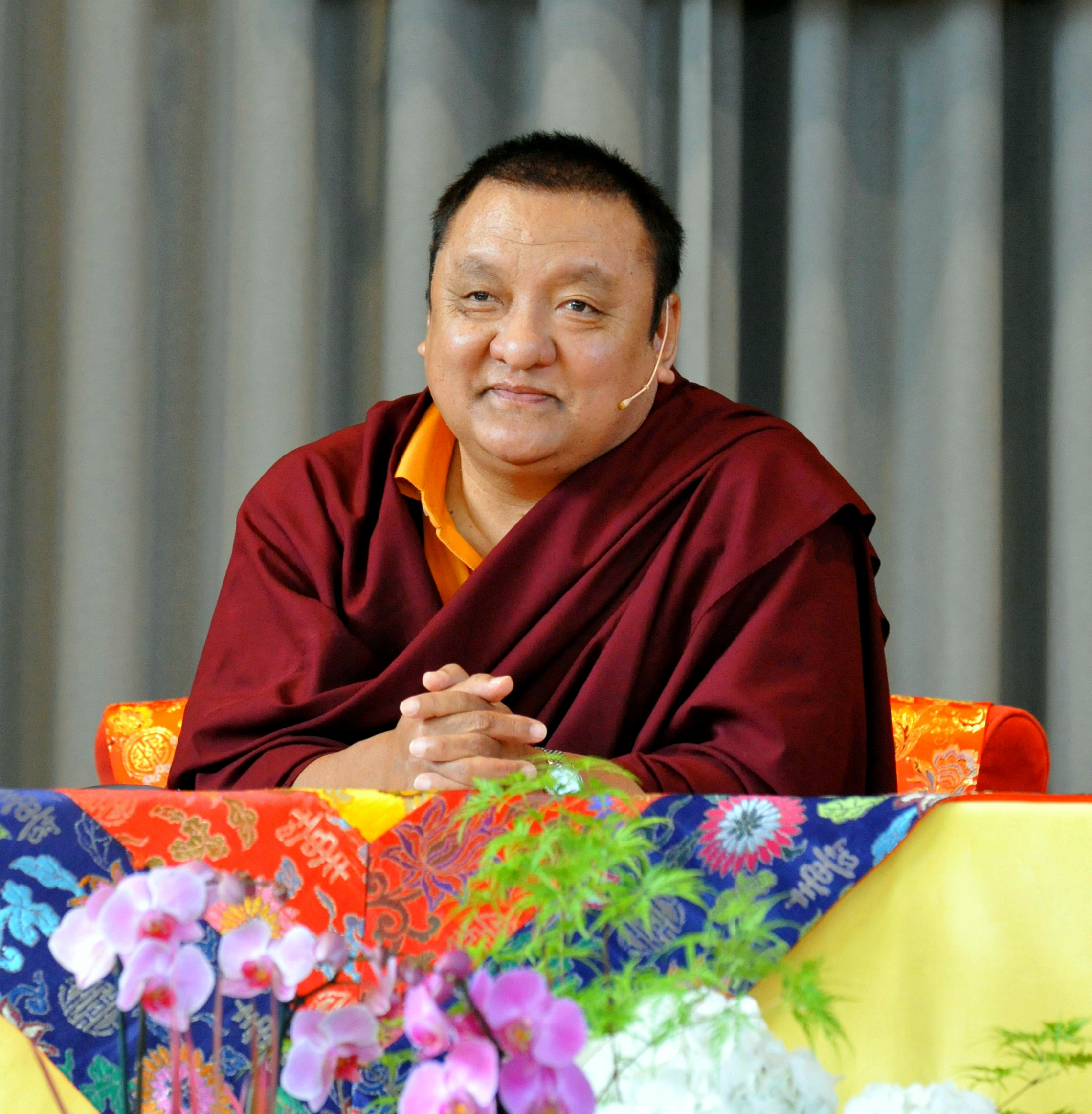|
Nyêmo Chekar Monastery
Nyêmo Chekar monastery ( bo, snye mo bye dkar) ཉེ་མོ་ཆེ་དཀར་དགོན། is a small Buddhist monastery of the Bodongpa tradition in Nyêmo County, Lhasa, Tibet. It is known for its mural paintings of reincarnations of the Samding Dorje Phagmo. Location Nyemo Chekar lies near Uyuk in Nyêmo County. It is the birthplace of 8th century "translator" Vairotsana. The name comes from an area of ''chekar'' (''bye dkar''), or white sand, that surrounds the monastery. The monastery was established in the 16th century by Tashi Ombar, protector of the Bodongpa tradition, and Chime Palsang, spiritual master of the tradition. A visitor to the monastery in July 1996 described it as small and somewhat decrepit. It stood on a mound above a grove of willows and a small stream. Paintings The old wall paintings in the porch of the temple had been repainted by 1996. In a dark altar room on the ground floor the walls are completely decorated with much older portraits t ... [...More Info...] [...Related Items...] OR: [Wikipedia] [Google] [Baidu] |
Chökyi Drönma
Chökyi Drönma (1422-1455) was a Tibetan princess and Buddhist leader. She was the main consort of Thang Tong Gyalpo, who recognized her as an emanation of Machig Labdrön through the lineage of Vajravārāhī and appointed her as the first Samding Dorje Phagmo. Biography Chökyi Drönma was born in 1422 as the daughter of Thri Lhawang Gyaltsen, the king of Mangyül Gungthang. In 1438 she married a prince from the Southern Tibetan Kingdom of Lato in order to create an alliance between Gungthang and Lato. In 1440, she gave birth to a daughter. When her daughter was old enough to begin schooling, Drönma negotiated with her husband to have her educated according to Buddhist principals. A few years later she returned to Gungthang with an army to assist in an on-going conflict. While she was away her daughter died. After her death, Drönma formally announced her desire to take religious vows, to which her family refused. She became a student of Thang Tong Gyalpo and, eventually, ... [...More Info...] [...Related Items...] OR: [Wikipedia] [Google] [Baidu] |
Bodongpa
The Bodongpa or Bodong tradition, is one of the smaller traditions of Tibetan Buddhism falling outside the classification of the four main schools. History Bodong E Monastery (), located in Yutok (), in modern Tashigang (), Lhatse County, was the main monastery of the Bodong tradition. It was first established in 1049 by the Kadam (Tibetan Buddhism) teacher Mudra Chenpo (). Bodong tradition itself goes back to Bodong Rinchen Tsemo, who received teachings from Drubthob Semo Chewa. Its most renowned figure, often regarded as its founder, was the Bodong Penchen Lénam Gyelchok (, 1376-1451), whose seat was at this monastery. Bodong Penchen authored over one hundred and thirty-five volumes and is known as the most prolific writer in Tibetan history. His most famous work is the ''Compendium of Suchness'' () comprising one hundred and thirty-three volumes having about 500 folios (1000 pages) in each. The extensive version contains one hundred and ten volumes; the medium version, tw ... [...More Info...] [...Related Items...] OR: [Wikipedia] [Google] [Baidu] |
Buddhism
Buddhism ( , ), also known as Buddha Dharma and Dharmavinaya (), is an Indian religion or philosophical tradition based on teachings attributed to the Buddha. It originated in northern India as a -movement in the 5th century BCE, and gradually spread throughout much of Asia via the Silk Road. It is the world's fourth-largest religion, with over 520 million followers (Buddhists) who comprise seven percent of the global population. The Buddha taught the Middle Way, a path of spiritual development that avoids both extreme asceticism and hedonism. It aims at liberation from clinging and craving to things which are impermanent (), incapable of satisfying ('), and without a lasting essence (), ending the cycle of death and rebirth (). A summary of this path is expressed in the Noble Eightfold Path, a training of the mind with observance of Buddhist ethics and meditation. Other widely observed practices include: monasticism; " taking refuge" in the Buddha, the , and the ; ... [...More Info...] [...Related Items...] OR: [Wikipedia] [Google] [Baidu] |
Nyêmo County
Nyêmo is a county in the Lhasa west of the main center of Chengguan, Tibet. It lies on the north bank of the Yarlung Tsangpo River, the northern part of the Brahmaputra. The county has an area of , and as of 2011 had a population of 30,844 people, mostly engaged in agriculture or herding. Location "Nyemo" is the Tibetan word for "wheat". It is located in the middle section of the Brahmaputra, from Lhasa. It is mainly agricultural and pastoral, with an area of and an average elevation of . The county seat is above sea level. The Nimu Maqu River flows through the county from north to south. The Yarlung Tsangpo River forms its southern boundary. The highest point is a peak at above sea level, and the lowest point is where the Maqu River empties into the Brahmaputra at an elevation of . The county has a temperate semi-arid plateau monsoon climate, with about 100 frost-free days. Annual rainfall is . Nyêmo County mineral resources are copper, molybdenum and peat. Wildlif ... [...More Info...] [...Related Items...] OR: [Wikipedia] [Google] [Baidu] |
Samding Dorje Phagmo
The Samding Dorje Phagmo () is the highest female incarnation in Tibet''The Power-places of Central Tibet: The Pilgrim's Guide'', (1988) p. 268. Keith Dowman. . and the third highest-ranking person in the hierarchy after the Dalai Lama and the Panchen Lama. She was listed among the highest-ranking reincarnations at the time of the 5th Dalai Lama, recognized by the Tibetan government and acknowledged by the emperors of Qing China. In her first incarnation, as Chökyi Drönma (1422 CE–1455 CE), she was the student and consort of the famous polymath Thang Tong Gyalpo, who first identified her as an emanation of Vajravārāhī, and the consort of Bodong Panchen. The seat of the Samding Dorje Phagmo is at Samding Monastery, in Tibet. History and background The seat of the Samding Dorje Phagmo is at the Samding Monastery "Temple of Soaring Meditation." The Samding Monastery is associated with the Bodong school of Tibetan Buddhism. It was unique because half of the inhabitants were ... [...More Info...] [...Related Items...] OR: [Wikipedia] [Google] [Baidu] |
Vairotsana
Vairotsana () was a lotsawa or "translator" living during the reign of King Trisong Detsen, who ruled 755-97 CE. Vairotsana, one of the 25 main disciples of Padmasambhava, was recognized by the latter as a reincarnation of an Indian pandita. He was among the first seven monks ordained by Śāntarakṣita, and was sent to Dhahena in India to study with Śrī Siṅgha, who taught him in complete secrecy. Śrī Siṅgha in turn entrusted Vairotsana with the task of propagating the semde and longdé sections of Dzogchen in Tibet. He is one of the three main masters to bring the Dzogchen teachings to Tibet, the two others being Padmasambhava and Vimalamitra, and was also a significant lineage holder of trul khor. Shechen Gyaltsab mentions in his ''Pond of White Lotus Flowers'' that before meeting Śrī Siṅgha, Vairotsana had met the wisdom forms of the two vidyadharas Garab Dorje and Mañjuśrīmitra in a miraculous pagoda at Dhahena. After he had presented a huge offering of gol ... [...More Info...] [...Related Items...] OR: [Wikipedia] [Google] [Baidu] |
Dorje Phagmo
The Vajra () is a legendary and ritual weapon, symbolising the properties of a diamond (indestructibility) and a thunderbolt (irresistible force). The vajra is a type of club with a ribbed spherical head. The ribs may meet in a ball-shaped top, or they may be separate and end in sharp points with which to stab. The vajra is the weapon of Indra, the Vedic king of the devas and heaven. It is used symbolically by the dharmic traditions of Hinduism, Buddhism, and Jainism, often to represent firmness of spirit and spiritual power. According to Hinduism, the vajra is considered one of the most powerful weapons in the universe. The use of the vajra as a symbolic and ritual tool spread from Hinduism to other religions in India and other parts of Asia. Etymology According to Asko Parpola, the Sanskrit () and Avestan both refer to a weapon of the Godhead, and are possibly from the Proto-Indo-European root ''*weg'-'' which means "to be(come) powerful". It is related to Proto- Fi ... [...More Info...] [...Related Items...] OR: [Wikipedia] [Google] [Baidu] |
Yogini
A yogini (Sanskrit: योगिनी, IAST: ) is a female master practitioner of tantra and yoga, as well as a formal term of respect for female Hindu or Buddhist spiritual teachers in Indian subcontinent, Southeast Asia and Greater Tibet. The term is the feminine Sanskrit word of the masculine ''yogi'', while the term "yogin" is used in neutral, masculine or feminine sense. A yogini, in some contexts, is the sacred feminine force made incarnate, as an aspect of Parvati, and revered in the yogini temples of India as the Sixty-four Yoginis. History The worship of yoginis began outside Vedic Religion, starting according to Vidya Dehejia with the cults of local village goddesses, the ''grama devatas''. Each one protects her village, sometimes giving specific benefits such as safety from the stings of scorpions. Gradually, through Tantra, these goddesses were grouped together into a number believed powerful, most often 64, and they became accepted as a valid part of Hinduism. ... [...More Info...] [...Related Items...] OR: [Wikipedia] [Google] [Baidu] |
Shamarpa
The Shamarpa (; literally, "Person (i.e. Holder) of the Red Crown"), also known as ''Shamar Rinpoche'', or more formally Künzig Shamar Rinpoche, is a lineage holder of the Karma Kagyu school of Tibetan Buddhism and is regarded to be the mind manifestation of Amitābha. He is traditionally associated with Yangpachen Monastery near Lhasa. The first Shamarpa, Drakpa Senggé (, 1283–1349), received the title "Shamarpa", and a red crown, an exact replica of Karmapa’s black crown from Rangjung Dorje, 3rd Karmapa, establishing the second line of reincarnate lamas in Tibetan Buddhism. The Karmapa was the first. The Shamarpa is often referred to as the "Red Hat Karmapa", especially in early Kagyu texts. The 5th Dalai Lama saw the Shamarpa as equal to the Karmapa: The Shamarpa lineage Shamarpa considered to be successive reincarnations are listed in "The Garland of Moon Water Crystal" by the 8th Tai Situpa Chökyi Jungne and Belo Tsewang Künkhyab. # Khedrup Drakpa Senge ( ... [...More Info...] [...Related Items...] OR: [Wikipedia] [Google] [Baidu] |
Buddhist Monasteries In Lhasa (prefecture-level City)
Buddhism ( , ), also known as Buddha Dharma and Dharmavinaya (), is an Indian religion or philosophical tradition based on teachings attributed to the Buddha. It originated in northern India as a -movement in the 5th century BCE, and gradually spread throughout much of Asia via the Silk Road. It is the world's fourth-largest religion, with over 520 million followers (Buddhists) who comprise seven percent of the global population. The Buddha taught the Middle Way, a path of spiritual development that avoids both extreme asceticism and hedonism. It aims at liberation from clinging and craving to things which are impermanent (), incapable of satisfying ('), and without a lasting essence (), ending the cycle of death and rebirth (). A summary of this path is expressed in the Noble Eightfold Path, a training of the mind with observance of Buddhist ethics and meditation. Other widely observed practices include: monasticism; "taking refuge" in the Buddha, the , and the ; and ... [...More Info...] [...Related Items...] OR: [Wikipedia] [Google] [Baidu] |
